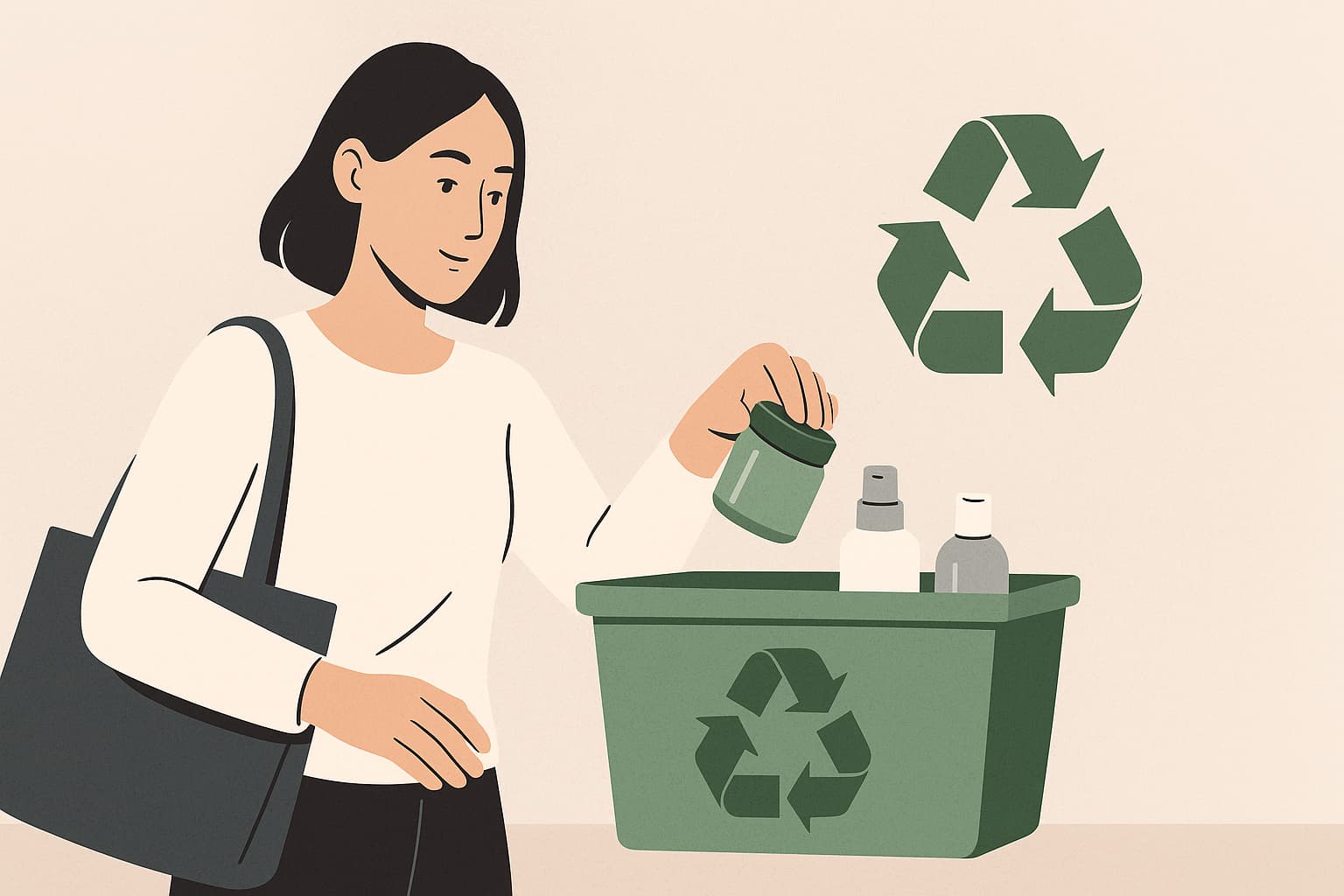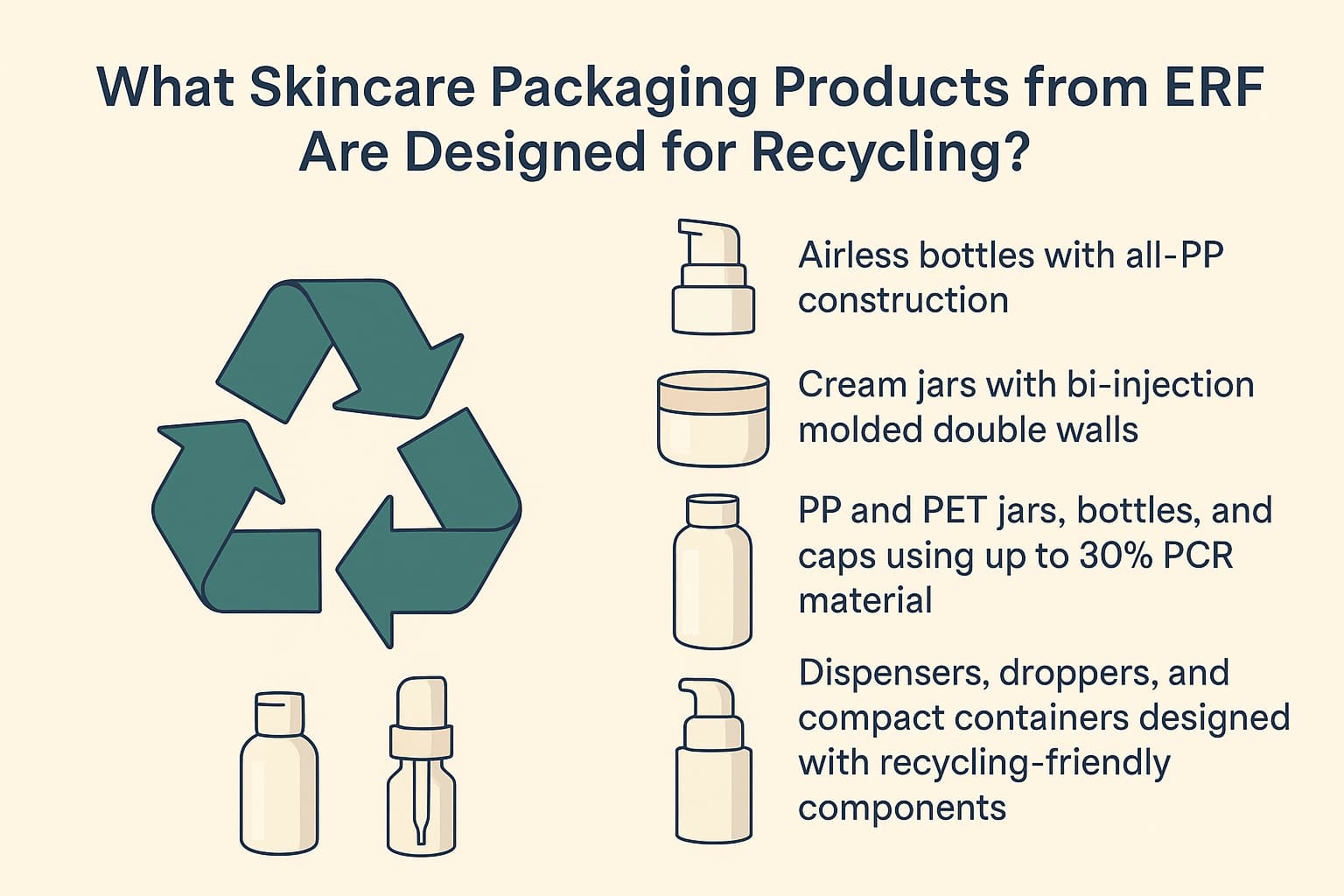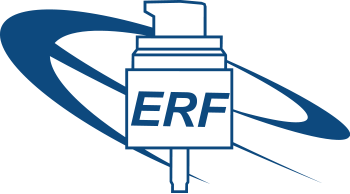- Home
- News
- Product News
- Can Your Skincare Bottles Be Recycled? Key Facts and Tips for Sustainable Packaging Design
Can Your Skincare Bottles Be Recycled? Key Facts and Tips for Sustainable Packaging Design

As consumer demand for sustainable and eco-friendly products continues to rise, skincare brands are under growing pressure to rethink their packaging choices. At Ever Rich Fountain Enterprise Co., Ltd. (ERF), we have been at the forefront of innovative cosmetic packaging since 1991, helping brands achieve both functional excellence and environmental responsibility.
In this article, we will explore whether skincare bottles can truly be recycled, and share key considerations for creating sustainable packaging designs that support your brand’s eco goals.
Yes, But It Depends on Design and Material
Skincare bottles can be recycled, but whether they will be successfully recycled largely depends on their material composition and design complexity.
At ERF, we manufacture bottles and jars primarily from PP (polypropylene) and PET (polyethylene terephthalate) — two materials widely recognized for their recyclability. PP offers excellent chemical resistance and is environmentally friendly, while PET is prized for its clarity and good chemical resistance.
However, the more complex the packaging (such as multi-material combinations, metallic coatings, or decorative layers), the harder it becomes to recycle. A simple, mono-material bottle made entirely of PP or PET is far more likely to complete the recycling process efficiently.
Why Packaging Simplicity Matters in Recycling
When designing packaging, many brands aim for a premium, eye-catching look. Unfortunately, the more complex the design, the lower the chance of the packaging being recycled.
- Mixed materials (such as combining metal springs with plastic pumps) require extra energy and specialized processes to separate.
- Decorative coatings like metallizing or UV varnish can contaminate recycling streams.
- Multi-layer packaging may be classified as non-recyclable by sorting facilities.
To solve these issues, ERF offers skincare bottles and jars designed with mono-material construction. For example, our cream jars, airless bottles, and pumps can be made using only PP components — from cap to base. This not only simplifies the recycling process but also reduces energy consumption during material separation.
The Role of PCR (Post-Consumer Recycled) Plastics
In line with our mission to provide sustainable solutions, ERF incorporates Post-Consumer Recycled (PCR) plastics into our packaging options.
What is PCR?
PCR refers to plastic that has been used by consumers, collected, cleaned, and repurposed into new packaging. Using PCR reduces the need for virgin plastic, which is derived from fossil fuels, and helps extend the lifecycle of existing plastic.
Advantages of PCR for Skincare Packaging
- Reduces carbon footprint: By sourcing PCR locally in Taiwan, ERF minimizes transport emissions.
- Supports circular economy: PCR helps divert plastic waste from landfills.
- Sustainability messaging: Brands using PCR demonstrate visible commitment to eco-conscious consumers.
Important Considerations
PCR material often contains small visual imperfections such as black flecks or slight color variations. We generally recommend:
- Using dark or opaque colors (amber, dark green, cobalt blue) to mask any inclusions.
- Keeping PCR content under 30% for optimal balance between sustainability and visual quality.
- Performing compatibility testing to ensure product stability with PCR packaging.
How Bi-Injection Molding Supports Sustainability
At ERF, we have also introduced bi-injection molding technology for cream jars and certain bottles.
This advanced technique allows us to:
- Combine two colors in a single injection step
- Create double-walled jars with translucent outer layers and opaque inner layers without secondary color coating
By eliminating secondary color spray or metallizing processes, bi-injection reduces both production time and environmental impact. This not only leads to lower costs but also reduces pollution associated with traditional decorative processes.
Best Practices for Designing Recyclable Skincare Packaging
- Choose Mono-Material Designs: Select packaging made from a single type of plastic (e.g., all-PP or all-PET) to improve recyclability.
- Minimize Decorative Processes: Limit or eliminate coatings like metallizing, lacquering, or UV sprays, as these can interfere with recycling and increase environmental impact.
- Embrace Bi-Injection and PCR Solutions: Consider bi-injection molding for aesthetic impact without added coatings. Where appropriate, integrate PCR materials — and inform your customers about your sustainability efforts.
- Work with an Experienced Supplier: Partner with manufacturers like ERF who understand sustainable design and can customize solutions to meet both your brand’s style and environmental goals.
What Skincare Packaging Products from ERF Are Designed for Recycling?
ERF offers a wide range of recyclable packaging solutions, including:
- Airless bottles with all-PP construction
- Cream jars with bi-injection molded double walls
- PP and PET jars, bottles, and caps using up to 30% PCR material
- Dispensers, droppers, and compact containers designed with recycling-friendly components

Final Thoughts
Can your skincare bottles be recycled? Absolutely — provided they are thoughtfully designed and responsibly manufactured.
At ERF, we are committed to supporting skincare brands that want to deliver on their sustainability promises. By using recyclable materials, embracing PCR, and applying advanced molding techniques like bi-injection, we offer packaging that meets both aesthetic and environmental demands.
Looking for a custom sustainable packaging solution? Contact Ever Rich Fountain today and let us help you design skincare packaging that’s as good for the planet as it is for your brand.

